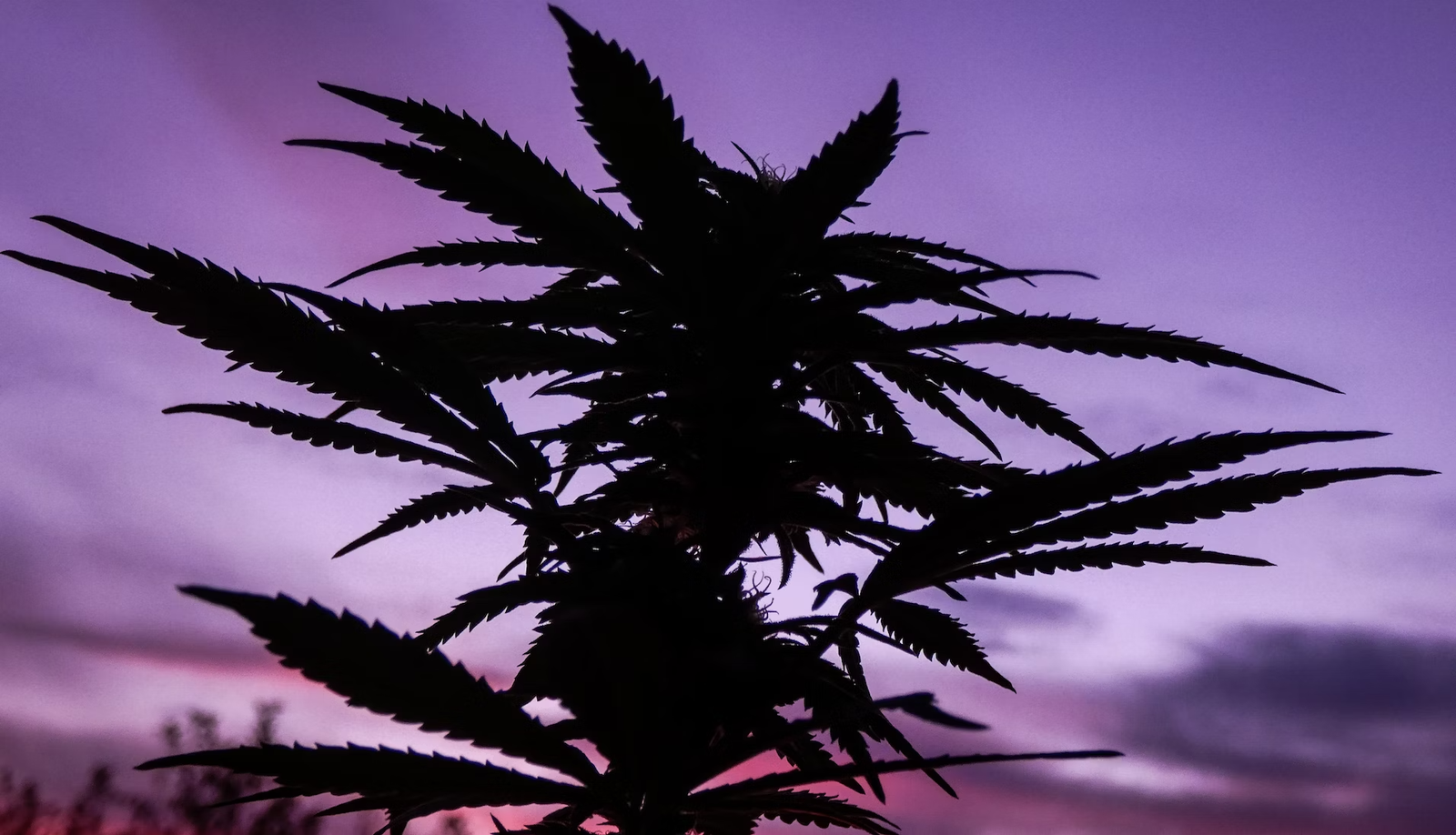Cultivating Cannabis Using the SCROG (Screen of Green) Technique
Employing the ScrOG technique in cannabis cultivation can lead to remarkable yields and remarkable plants. This training method enhances every aspect of your growth process, optimizing space utilization and maximizing plant productivity.
By training cannabis plants, growers can unlock a range of advantages, including amplified yields, diminished pathogen vulnerability, and enhanced vitality in their crops. ScrOG, also known as screen of green, involves training the plants to form a uniform and horizontal canopy. The creation of this botanical structure offers numerous benefits that contribute to a successful cultivation endeavor.
Demystifying the SCROG Technique: Unlocking the Secrets of Screen of Green
In their natural growth, cannabis plants tend to exhibit a vertical growth pattern, becoming taller rather than wider. The objective of the ScrOG technique is to counter this tendency by elevating lower branches and lowering upper branches, spreading them evenly across a defined plane. Through the strategic placement of a screen above the growing medium, cultivators have the ability to interlace branches through the mesh as the plants progress in their growth and development. By redirecting individual branches and guiding them horizontally along the screen, growers successfully establish a level, expansive canopy.
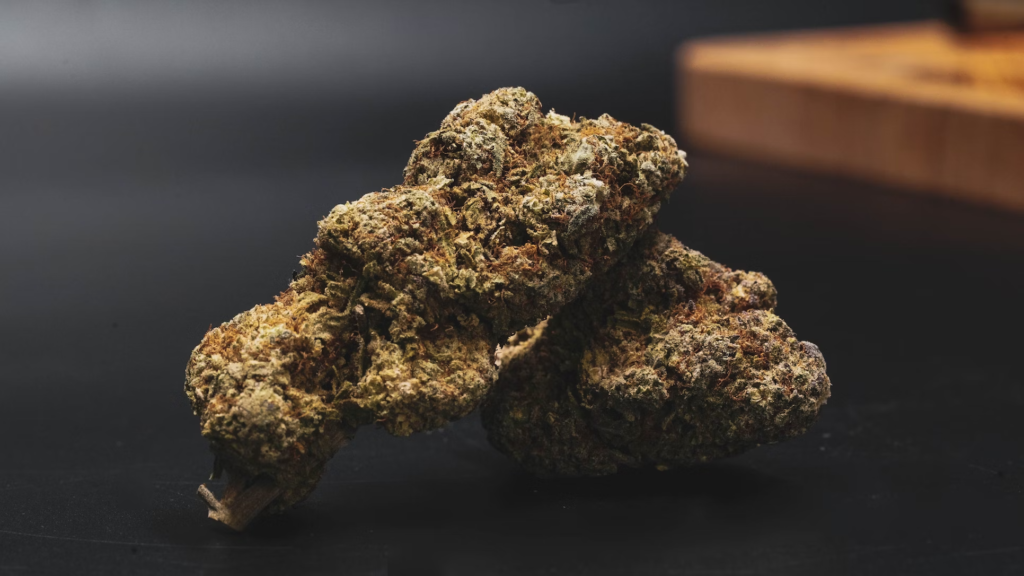
Benefits of Cultivating Cannabis Using the SCROG (Screen of Green) Method
Now, you may be wondering, what makes the ScrOG technique so desirable? Well, this method presents a myriad of advantages, such as:
- Light exposure: In a ScrOG setup, the canopy receives uniform light distribution. Unlike untrained cannabis plants that have a dominant main cola, requiring the light fixture to be positioned above it, a ScrOG configuration allows the lighting rig to be directly suspended over each individual flower. This ensures that every flower in the ScrOG system receives optimal light exposure.
- Yield: By providing sufficient light to each bud site, the ScrOG technique enables them to maximize their photosynthetic potential, resulting in enhanced size and resin production. This comprehensive training approach also converts the main stem and central cola into a profusion of multiple bud sites, multiplying the potential for robust flower development.
- Aeration: The horizontal screen of green ensures proper airflow both above and below the canopy, promoting optimal ventilation. To further enhance this advantage and minimize the chances of fungal pathogens, incorporating a fan into the setup proves highly beneficial.
- Maximise space: The SCROG technique allows growers to achieve higher yields from a single plant in a limited space compared to cultivating multiple smaller untrained plants. This method is particularly advantageous for discreet home-growers looking to maximize their output. Moreover, cultivators have the flexibility to train multiple plants and merge them into a unified ScrOG, further optimizing their cultivation potential.
Optimal Timing for Implementing the SCROG Technique
Begin guiding your plants through the screen once they make initial contact with it. It is advised to position the screen approximately 20cm above the base of your plants, and the timing for initiating the ScrOG technique will depend on their individual growth rate.
Initiate the “tucking” process as the apex of each plant starts to emerge through the screen. Wait until each tip reaches a height of 5cm above the screen before proceeding. Carefully tuck each shoot beneath the screen, directing them through the adjacent square. The tucking process establishes the foundation of the ScrOG technique, so ensure you guide each branch in the desired direction of growth.
Maintain this process consistently during the vegetative phase of your plants. Once the screen is mostly filled, transition to a 12/12 light cycle to initiate the flowering stage.
Continue the tucking and weaving technique for each branch over the next 2-3 weeks, especially as your plants start to stretch during this period. Capitalize on this growth spurt to achieve full coverage of the screen before your plants enter the actual flowering stage, which will naturally slow down their growth.
Situations When the SCROG Technique May Not Be Suitable
Exercise caution to avoid premature tucking and weaving of your plants. While the temptation to rush ahead may be strong, it’s important to recognize that the plants will continue to grow well beyond the screen. Introducing training into the mesh too early, particularly during the early vegetative phase, can result in additional work and potential limitations on available space within your grid.
Essential Factors to Consider When Implementing the SCROG Technique
While ScrOG setups may appear intricate, implementing the technique itself demands minimal effort. Even growers with limited experience can readily embrace this method and achieve favorable outcomes. Simply adhere to the following guidelines, and you can look forward to a rewarding harvest.
Choosing the Ideal Cannabis Strains for Your SCROG Garden
Regardless of whether training techniques are employed, it is crucial for growers to select cannabis strains that align with their personal preferences, available space, and climate conditions. Certain genetics exhibit greater compatibility with the ScrOG technique compared to others. Explore the essential traits to consider when choosing strains for optimal results below.
- Stretchy sativas: Sativa-dominant cultivars are known for their tall and slender growth patterns, making them highly suitable for weaving branches and achieving full coverage in a ScrOG setup. However, it’s worth noting that smaller and bushier indica strains can also be utilized effectively, provided that growers opt to maximize their space by using a higher number of plants.
- Strain matching: In a ScrOG setup, growers have the opportunity to cultivate multiple strains simultaneously, offering a delightful assortment of flowers. When selecting strains, it is advisable to choose varieties that exhibit a similar average height. This consideration helps to minimize the required effort in managing and maintaining the plants within the ScrOG system.
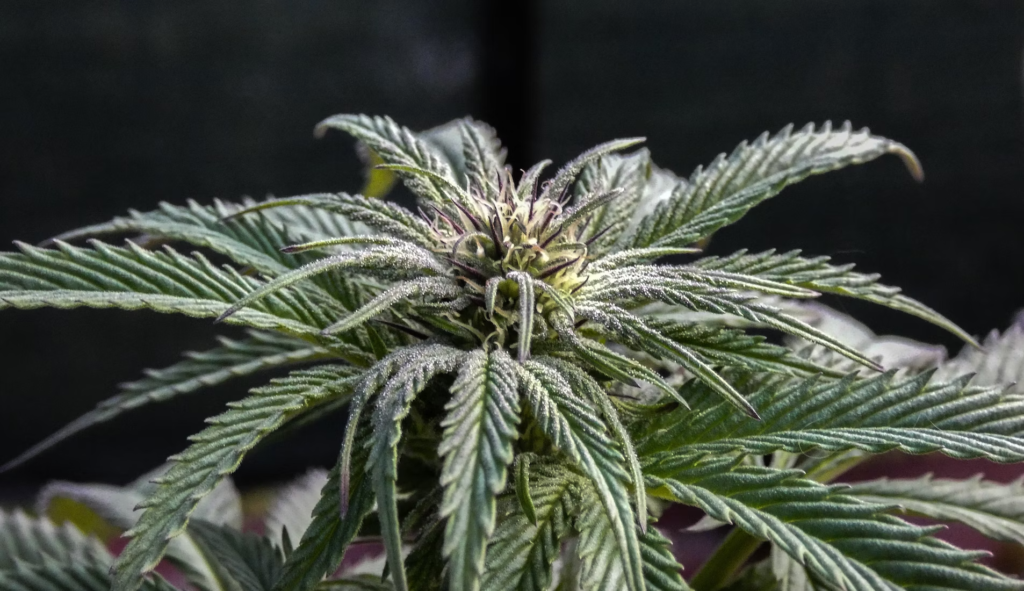
Selecting Appropriate Containers for Your SCROG Grow
Choosing the appropriate pot size is crucial for maximizing your SCROG grow. The ideal pot size will vary depending on the number of plants you plan to incorporate into your setup. Take into account the following factors:
- Multiple plants: When aiming to cultivate multiple plants within a limited space, it is essential to consider spacing requirements. Consequently, each plant will necessitate a smaller pot size. An 11-liter pot is recommended as it efficiently utilizes the available space, allowing for optimal plant growth.
- Single plants: When employing a single plant in your SCROG setup, it is advantageous to opt for a larger pot size. A 25-liter pot provides ample space for the plant to develop a robust root system and expansive canopy, promoting optimal growth and productivity.
- Fabric pots: Implementing the SCROG technique significantly enhances canopy aeration, and utilizing a fabric pot further augments the airflow within the growing medium. The RQS Fabric Pot, specifically designed with a proprietary Aqua Breathe layer, facilitates heightened oxygen levels and improved moisture retention, contributing to optimal growing conditions.
Cultivating multiple plants in a SCROG setup offers the advantage of harvesting a diverse selection of your favorite strains. It allows you to grow high-THC and high-CBD varieties side by side and even pair plants based on their unique terpene profiles.
When growing multiple plants, proper spacing becomes a crucial factor in minimizing the risk of mold formation and maximizing overall yield. The objective is to accommodate as many plants as possible within the space while ensuring they are adequately spaced apart to enhance light exposure and airflow, promoting optimal growth conditions.
In a square meter area, it is feasible to accommodate four small to medium-sized plants with a maximum pot size of 11 liters.
SCREEN: HEIGHT, SIZE, AND MATERIALS
Constructing a ScrOG screen is a straightforward task that requires minimal effort. If you have experience assembling flat-pack furniture or hanging a picture on the wall, you possess the necessary skills. Ensure you have the following resources and equipment at hand, and you’ll be well-prepared to proceed:
- Size: The number of plants you intend to grow and their size determines the appropriate dimensions for your canopy. It is crucial to achieve a completely even canopy, so using a slightly larger screen is preferable to using an undersized one, as it will pose fewer challenges. If you are uncertain about the exact dimensions, it is advisable to err on the side of caution and opt for a slightly larger screen. Conversely, if space is limited, construct a screen that fits the maximum dimensions your area can accommodate.
- Screen: String or hemp cord is an excellent choice for the job. The coarse texture of these materials allows cannabis branches to adhere effectively, providing reliable support. Additionally, the convenience of easily disposing of the material after use adds to its appeal.
- Frame: To create a square (or rectangular) frame for your SCROG setup, start by cutting four pieces of timber slightly smaller than your available growing space. Cut four legs of even size and securely attach them to the frame using screws from the top. Alternatively, you can achieve a similar design using PVC piping. Next, screw eye hooks into the top of the frame, spacing them approximately 6cm apart. Finally, attach the string or hemp cord to the eye hooks, ensuring it is taut and ready to support your plants.
Step-by-Step Guide to Implementing the SCROG Technique
Once your plants have spent a few weeks in the seedling stage, they will transition into the vegetative phase. To ensure that your plants are well-prepared for the ScrOG method, it is important to complete the following tasks on your checklist.
- Topping: Once each plant has reached the stage of developing five nodes (the point where branches meet the stem), it is time to perform topping. Prepare a pair of clean, sharp scissors and carefully snip the main stem just above the highest node. Topping redirects the plant’s growth into multiple main stems instead of a single one, promoting lateral growth that is better suited for the ScrOG method.
- Setup: Place the screen at a distance of approximately 20–40cm (varying based on the plant type) above the top of the growing medium. Arrange your lights in a manner that ensures uniform light distribution across the screen.
- Weaving: Unlike plants such as runner beans and hops that naturally grow like vines, cannabis branches do not exhibit the same behavior. Therefore, you will need to manually weave the branches through the screen. The goal is to have each square filled with an individual branch to maintain proper spacing and prevent overcrowding. Take care to be gentle but effective during the weaving process. If you encounter resistance and a branch seems unwilling to go in a particular direction, avoid risking breakage and instead direct the branches in different directions to achieve optimal filling of the screen. This approach helps prevent overshadowing and overcrowding.
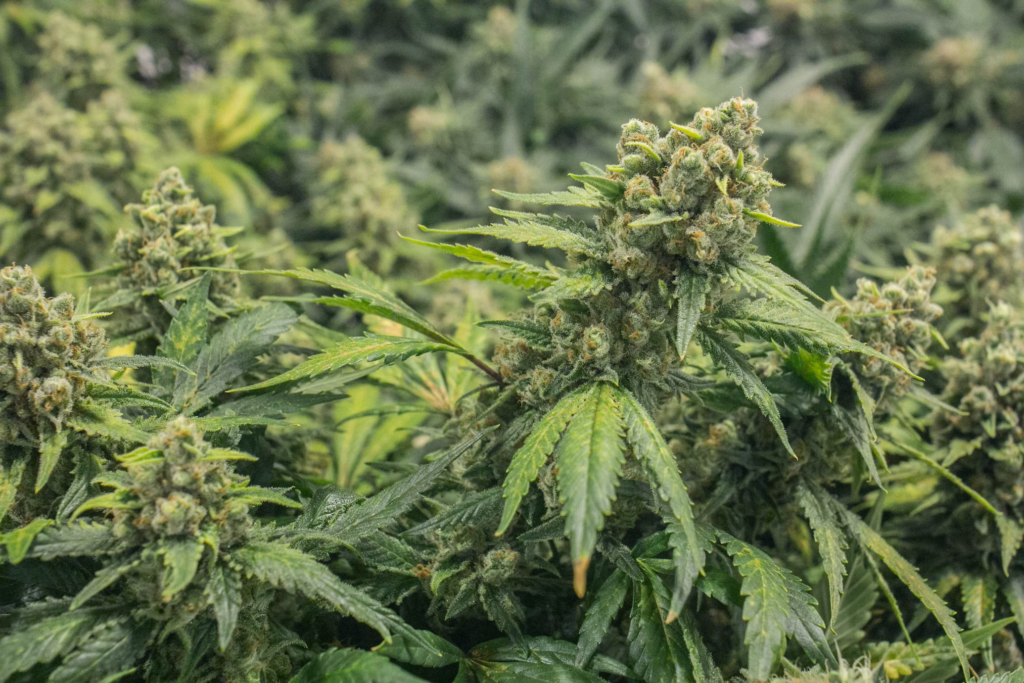
Continue the weaving process throughout the early flowering phase until your screen is fully filled. Utilize soft garden ties to secure the branches in place, ensuring they are properly supported.
- Pruning: Prune and remove the branches located below the point where you topped your plant. By doing so, you encourage the plant to concentrate its energy and resources towards the canopy. These lower branches typically demand their own supply of nutrients and water, which can limit the overall growth potential. Removing them allows the plant to allocate its resources more efficiently.
- Maintenance: During the ScrOG process, cannabis plants can experience stress, so it’s crucial to provide them with proper care. After each weaving session, ensure that you water the plants promptly. Going forward, water the soil only when the top 3-4cm is fully dry to prevent overwatering. It is also essential to maintain a well-balanced nutrient regimen to ensure your plants receive the necessary nutrients and avoid any deficiencies.
Maximizing the SCROG Method: Combining it with Other Cannabis Training Techniques
While the SCROG technique alone can yield impressive results, combining it with other cannabis training techniques can take your results to the next level. Here are some of the most effective techniques to consider incorporating alongside SCROG.
LST
Low-stress training (LST) involves gently bending and securing cannabis branches to manipulate the plant’s shape. This technique doesn’t cause significant stress to the plants, allowing for quick recovery and continued growth.
LST can be effectively combined with the SCROG method in multiple ways. One approach is to tie down the plant’s tip and position the main stem parallel to the soil, encouraging upward growth of side branches and creating a more productive canopy. Another option is to utilize LST to secure the four main branches in an “X” shape after topping, promoting lateral growth and maximizing screen coverage.
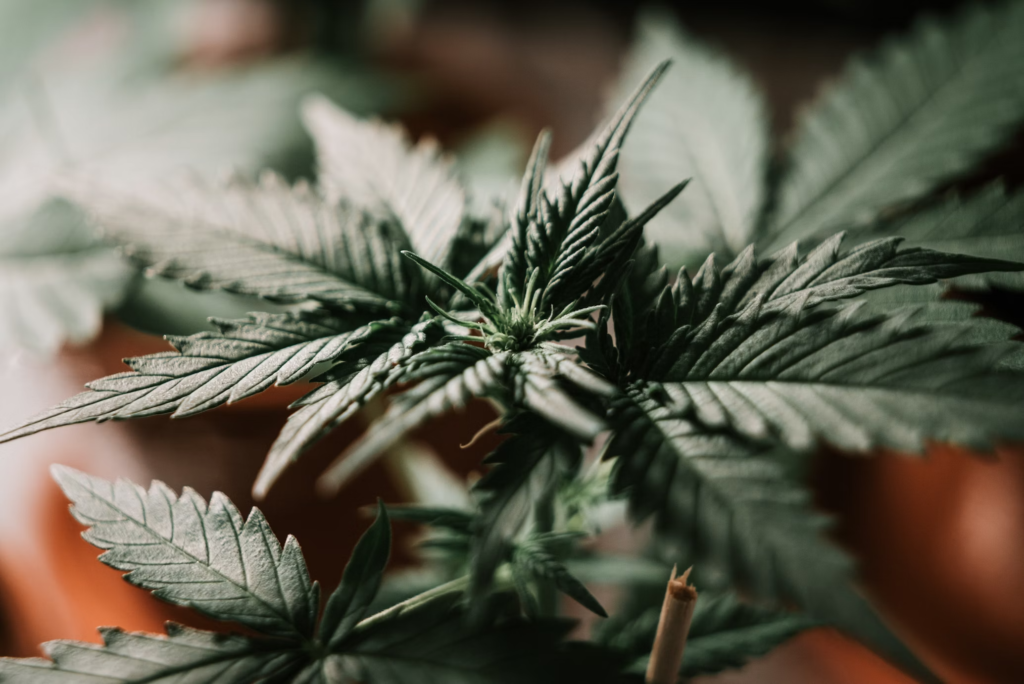
LOLLIPOPPING
Lollipopping is a defoliation technique that focuses on removing the lower foliage and bud sites from cannabis branches. By doing so, it improves airflow and redirects energy towards larger and more productive buds in the upper canopy.
When combined with the SCROG method, lollipopping proves particularly advantageous. It promotes the development of high-quality buds on the screen while minimizing the formation of smaller, less desirable “popcorn” buds on the lower parts of the branches. This technique is best performed with clean and sharp scissors towards the end of the vegetative stage. It synergizes well with other techniques such as LST and main-lining, enhancing overall results.
MAIN-LINING
Main-lining is a technique that involves a sequential process of topping and training cannabis plants to achieve a canopy with uniformly sized buds. It synergizes perfectly with the SCROG method, as it helps create an open and evenly distributed canopy that fits neatly into the mesh screen from below.
To successfully execute main-lining in conjunction with SCROG, follow these steps:
- At the third node of each plant, perform a topping by cutting off the tip, resulting in two main stems that diverge. Eliminate all growth below this point to focus the growth hormone and energy towards the remaining stems.
- Using soft garden ties, gently manipulate the two main stems to position them at a right angle to the soil.
- After giving your plant some time to produce new growth, proceed to top all of the main shoots once again. This additional topping will effectively double the number of main stems in your plant.
- Securely tie down the new main stems and carefully remove any other new growth that may interfere with the desired symmetrical canopy. You will start to observe the formation of a perfectly balanced canopy on both sides of your plant.
- Continue the topping process, repeating it a total of five times on each side of the plant. This will result in a total of 32 main shoots, which will be well-prepared for the ScrOG technique.

SUPER CROPPING
Make your branches more flexible and suitable for weaving by utilizing the super cropping technique. This technique involves delicately squeezing and pinching the branches to bend them downwards, just before the point of snapping. This process enhances light penetration and makes the plants more adaptable to the ScrOG method.
Super cropping involves intentionally damaging the inner plant tissue to make the stems more pliable, without creating external wounds. However, it does carry some level of risk. It is recommended to perform this technique during the vegetative stage, before your plants are introduced to the screen. Follow the steps below to super crop your plant:
- Identify the branches that you intend to train. Look for sections of the plant that are relatively older and have pliable and flexible tissue.
- Hold the branch firmly between your thumb and forefinger and apply gentle pressure. Roll the tissue between your fingers for approximately 10 seconds, noticing the gradual softening of the inner branch.
- Carefully bend the branch in the desired direction of growth. If, by any chance, you accidentally tear the outer structure, secure the branch with tape to provide support and promote healing.
In essence, super cropping enables you to initiate the shaping of your plant, preparing it for a smooth transition into the screen during the later stages of the process.
STRAINS SUITED TO SCROG
GREEN GELATO
Green Gelato is a highly coveted strain among cannabis growers and enthusiasts, often spoken of with a sense of longing. Its cultivation offers a delightful combination of low maintenance and the excitement of watching dense buds develop during the flowering stage. As the 12-12 light cycle progresses, vibrant purples and mauves emerge, accompanied by the distinct fragrances of Kush, mint biscuit, and fruity desserts. Green Gelato delivers an exceptional THC potency of over 25%, making it a flavorful and potent choice for cannabis connoisseurs. With its unique terpene profile, this strain offers a mind-bending experience and a relaxing effect on the muscles.
The slightly indica-dominant nature of Green Gelato makes it an excellent candidate for the ScrOG method. Its high flower-to-leaf ratio ensures ample light exposure for the buds, as the minimal leaf production minimizes shading. This also reduces the need for time-consuming leaf removal. The strain’s tight flower clusters form at each node, resulting in a canopy of evenly sized and exposed buds. Even lower flowers, which may be smaller in untrained plants, have the opportunity for optimal growth in a ScrOG setup.
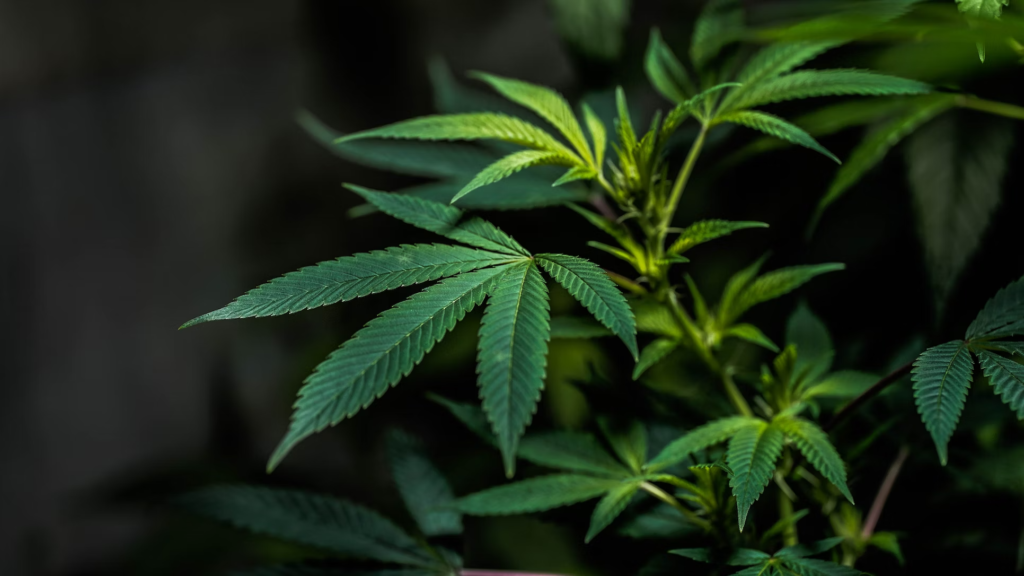
Since its introduction in the US, OG Kush has swiftly gained a reputation as a highly sought-after strain, captivating cannabis enthusiasts worldwide. Its alluring fragrance, visual appeal, potent effects, and delightful flavor profile continue to impress cannabis connoisseurs across the globe. With prominent citrus top notes accompanied by subtle sweet and sour undertones, OG Kush provides a sensory experience that lingers long after the joint is extinguished. Its extracts offer a pure explosion of flavors. This strain is a favorite choice for both recreational and therapeutic purposes, delivering a euphoric and mentally clear high combined with a deeply relaxing physical effect.
OG Kush’s healthy node spacing makes it an ideal candidate for the ScrOG technique. By topping the plant multiple times and encouraging lateral growth, the buds at each site have the opportunity to flourish, resulting in a dense carpet of Kush with ample space between the nuggets to prevent shading and promote airflow. Cannabis plants, in general, respond robustly to training methods, and OG Kush is no exception. It produces uniformly-sized and dense flowers throughout the entire light footprint. Remarkably, OG Kush delivers generous yields while remaining relatively easy to cultivate.
